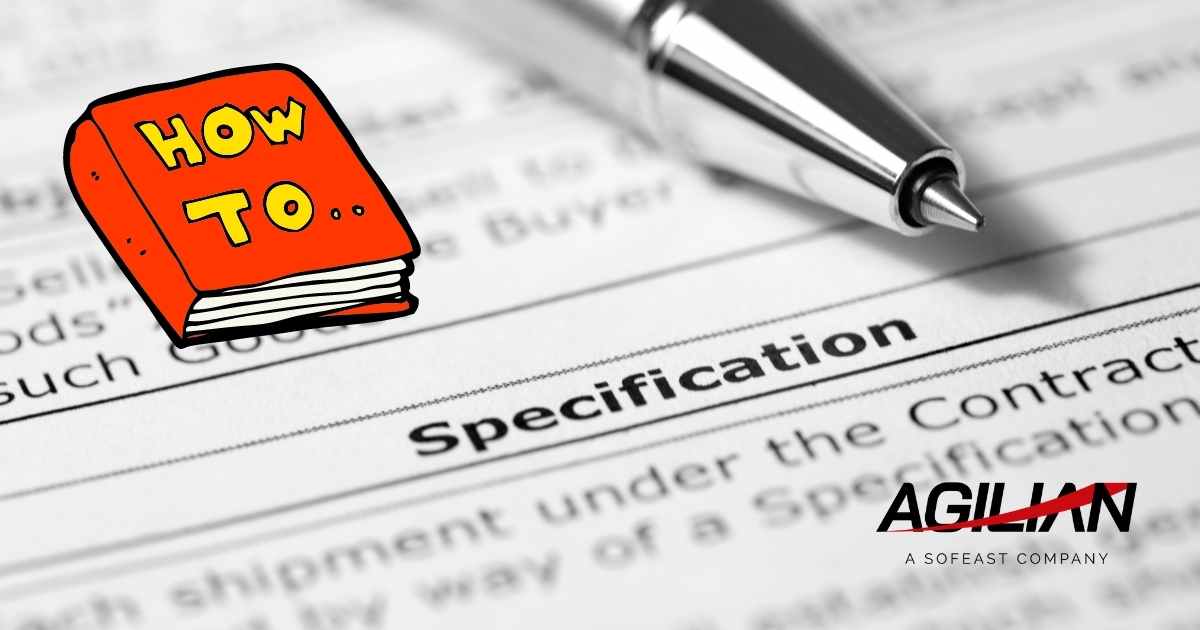
During the course of our work with various customers from around the world, we’re sometimes asked how to set product specifications?
It’s a good question, as getting your product specifications right is an effective way to control costs and quality and keep your manufacturer accountable (regardless of their location).
What are product specifications?
Your product specifications are a collection of information that makes it very clear to the supplier what your requirements are from the start. It usually takes the form of a spreadsheet that can be updated as and when needed.
Product specifications will include clear and specific information for the following:
- Product details (name, reference, who owns IP)
- Bill of materials (checked and approved by you and the supplier)
- Reference to ‘golden’ pre-production samples (you, the manufacturer, and perhaps your inspection team will have at least one)
- Product specifications (look, conformance to spec or tolerances, function, endurance, strength, fitness for purpose, usability, safety & compliance needs, etc)
- 2D CAD drawings with tolerances, and with indication of what measurement points are most important
- Inner packaging requirements
- Outer packaging requirements
- Labeling requirements
- Photos of the product and packaging samples
- A list of potential defects for products and packaging to look out for (Critical defects may cause injury or make the product non-compliant, major defects usually render a product unsellable as customers will return them, and minor defects may be acceptable)
- Quality inspections standards (e.g. ISO standard, inspection level, AQL limits, inspection type and date) – this includes product testing
Communicating your requirements and specifications piecemeal in chats, emails and calls is risky because it’s easy for things to get missed or forgotten. So, when deciding how to set product specifications, gathering all of this into one document is more efficient and safer.
👉 Good news! Our Executive VP Renaud created a FREE product specification template you can grab from his personal blog QualityInspection.org. Click here. 👈
Best practices to follow for your product spec sheet
Here are some best practices you may find helpful:
- Use a document format that is easy for the supplier to access. In much of the world, a Google sheet could be collaborated on in the cloud, but in China, an Excel sheet or Word doc will be better as many Western sites are blocked (also make them editable, PDFs can’t be commented on or changed by the supplier).
- Translate the specifications sheet into the local language of your supplier. For obvious reasons, this will help their comprehension and give extra peace of mind that they won’t misinterpret something important.
- Don’t write too much and keep it simple where possible – you may also use icons such as ticks or crosses to illustrate what is and isn’t acceptable, for example.
- Include as many photos of samples, defects, and requirements as possible – these are harder to misinterpret than the written word.
- Denote new changes clearly, perhaps by using a different color cell or text so everyone can see what’s been updated quickly.
- Don’t send the specifications in different chats, etc.
- Ask a product inspection firm to provide feedback on your suggested inspection and testing processes.
- Get feedback on the specifications from your supplier and then, once they agree, they should sign and date that they’ve accepted them.
When will the specifications be required?
If you develop a new product, documenting the requirements is something you should start from the beginning.
Then, those requirements become more and more specific as you review & test prototypes — it then morphs into product specifications, and you should have a workable document before the PVT pilot runs, and then mass production, gets underway.
You will also get a final pre-production sample before that late stage. It goes hand in hand with the specs.
Your supplier should already have shown that they can manufacture your products as expected, so setting product specifications just cements your expectations with them and gives them a valuable reference resource during production.
Have your say…
Do you have any questions about how to set product specifications? Let us know. We routinely assist our customers with this! 👍



